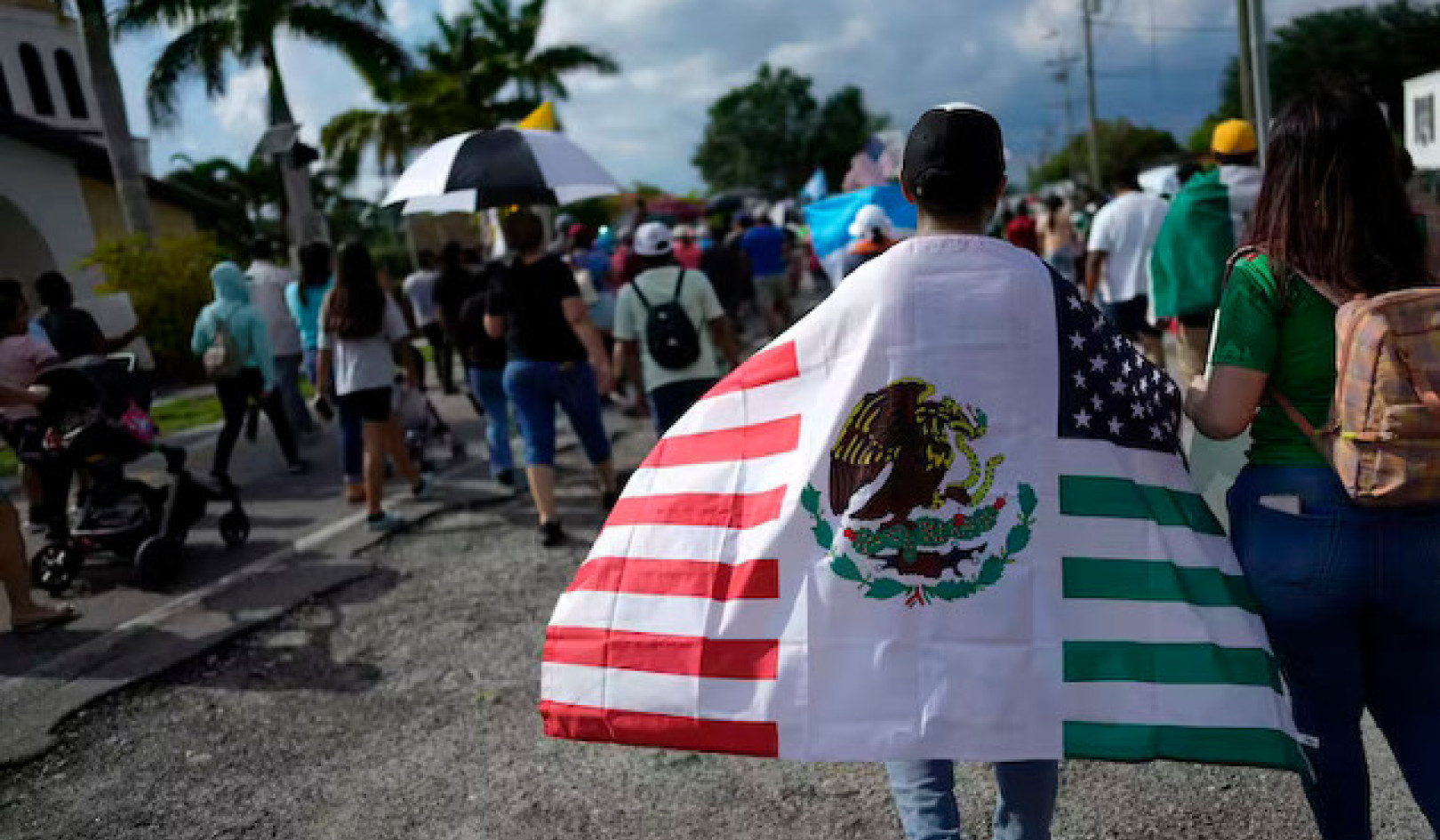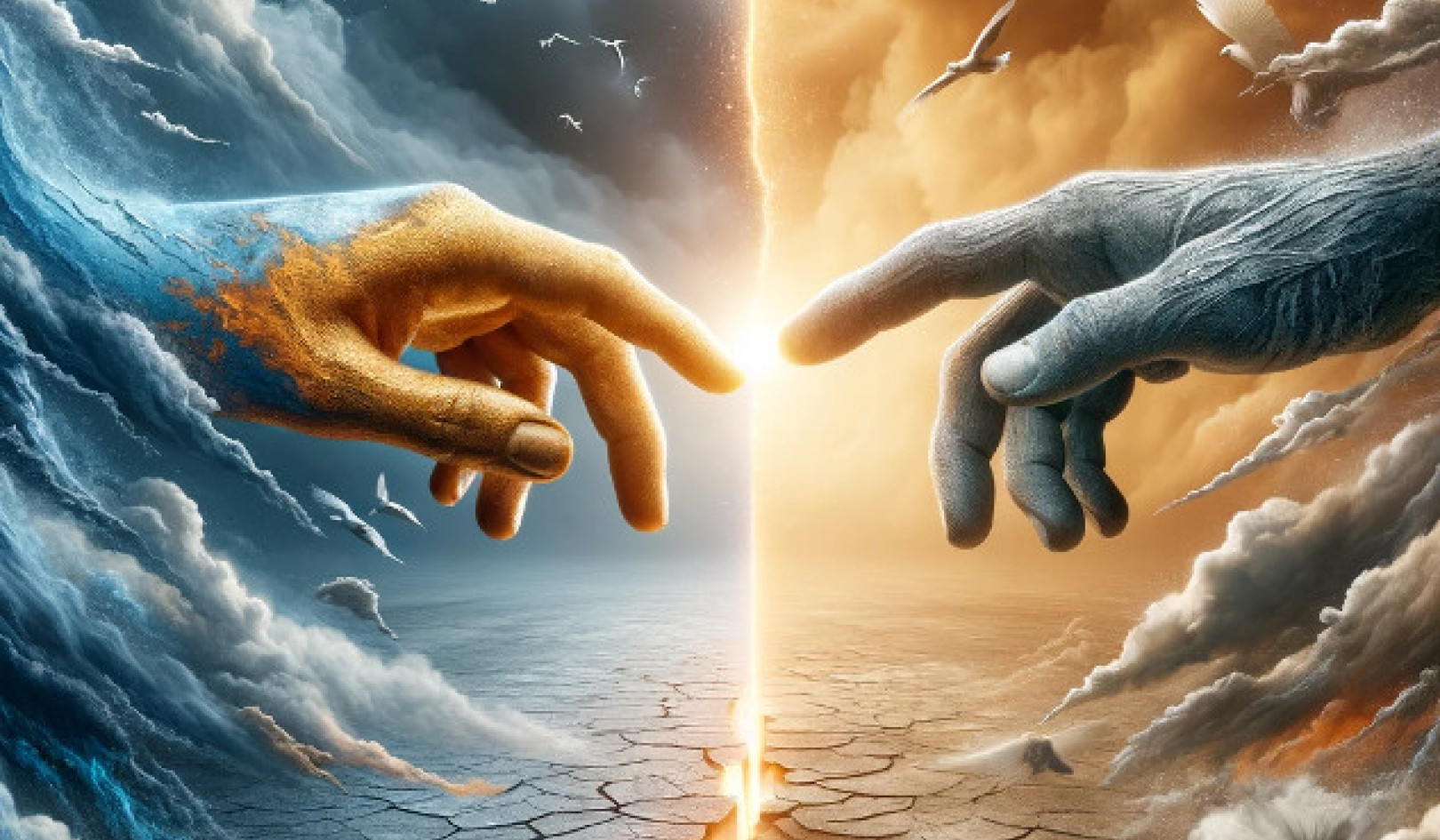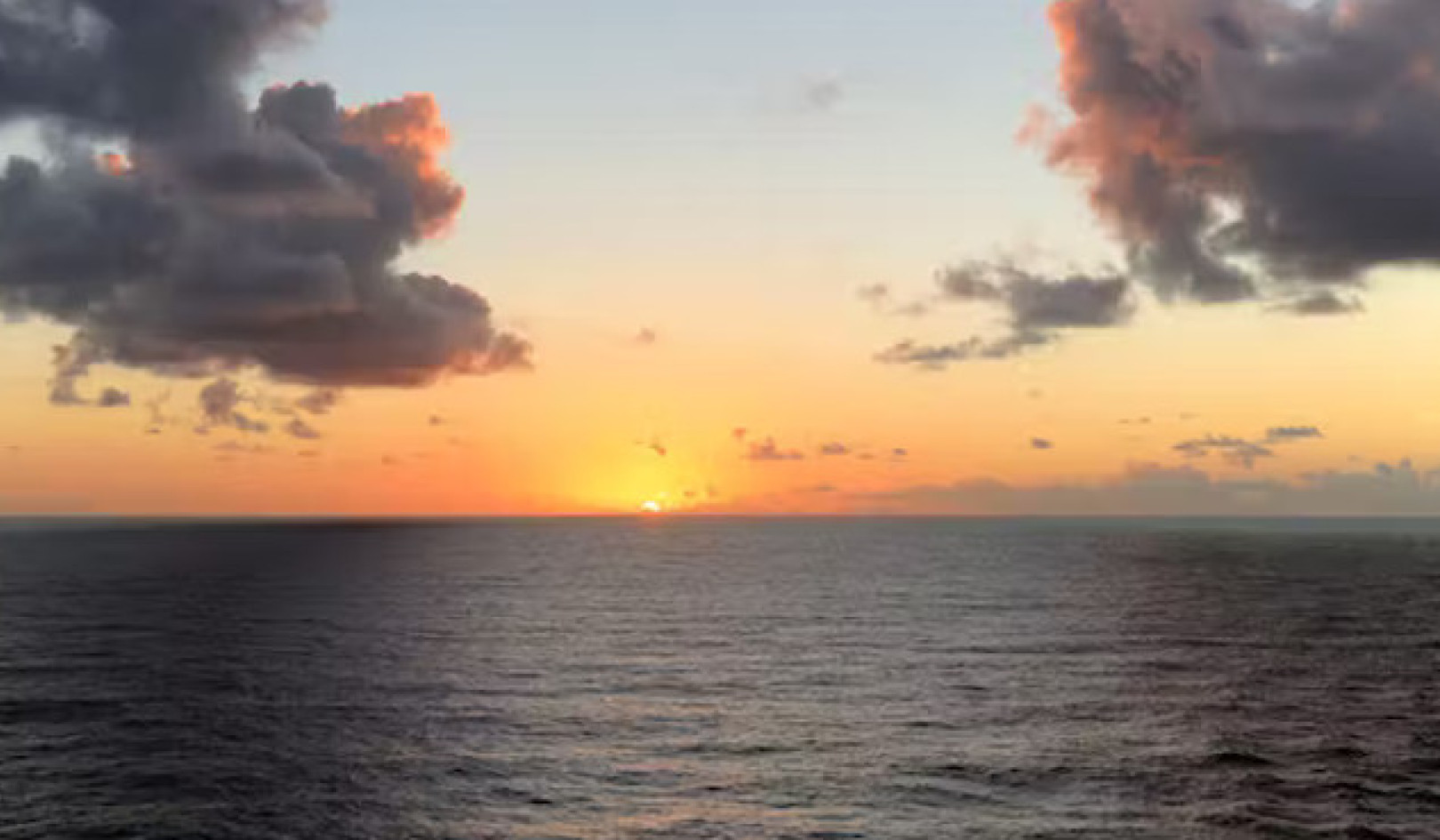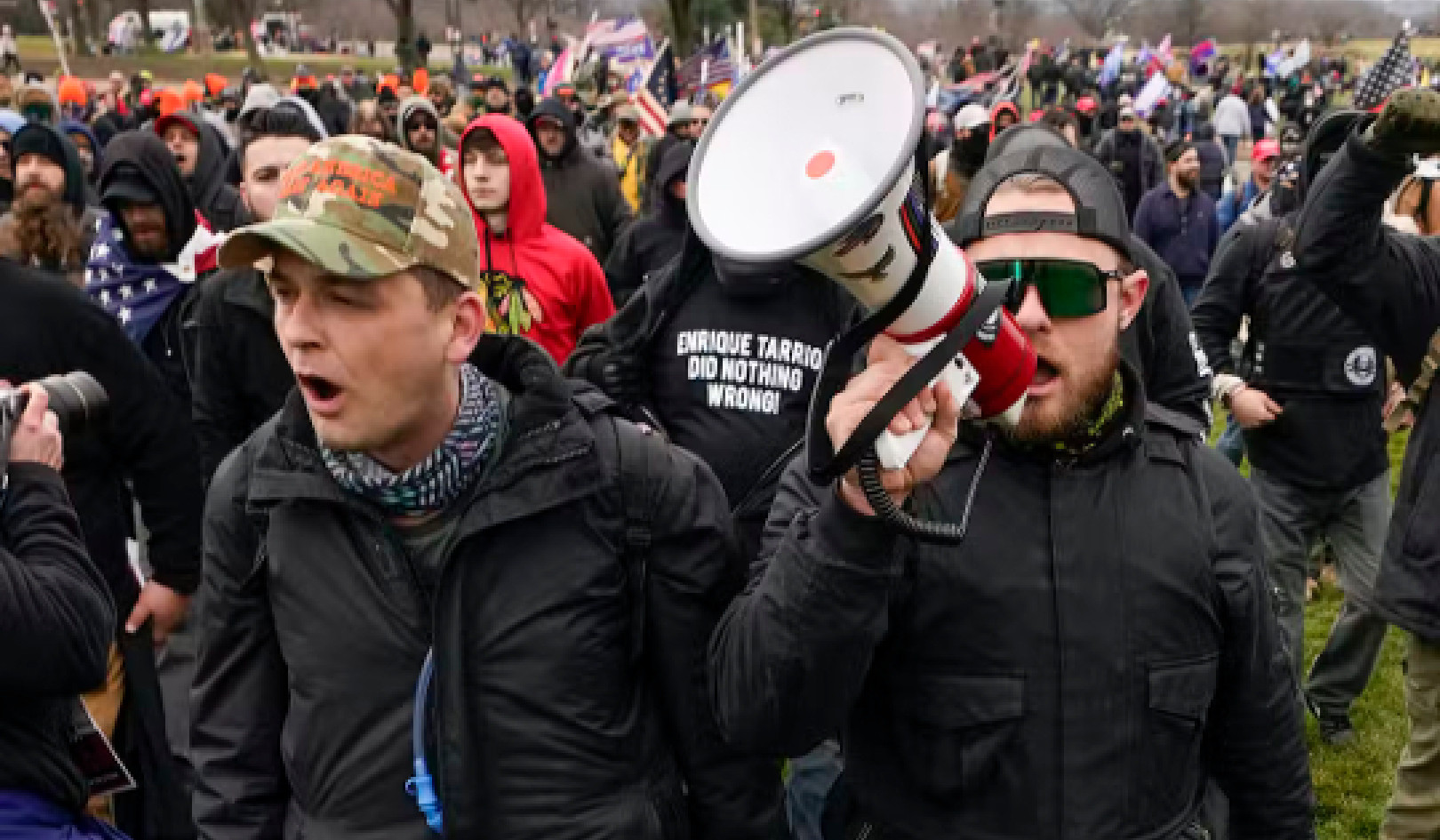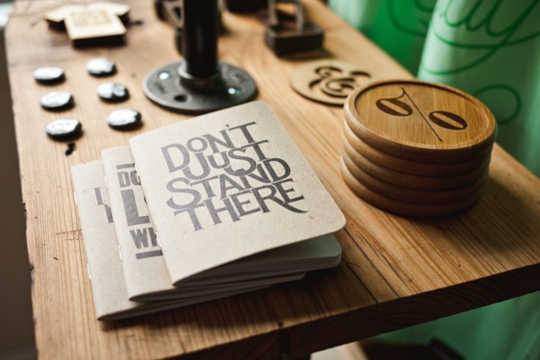
There is a vitality, a life force, a quickening,
that is translated through you into action,
and because there is only one of you in all of time,
this expression is unique.
And if you block it,
it will never exist through any other medium
and it will be lost.
The world will not have it.
It is not your business to determine how good it is
nor how valuable
nor how it compares with other expressions.
It is your business to keep it yours
clearly and directly, to keep the channel open.
You do not even have to believe in yourself or your work.
You have to keep yourself open and aware to the urges that motivate you.
Keep the channel open.
No artist is pleased.
There is no satisfaction at any time.
There is only a queer divine dissatisfaction,
a blessed unrest that keeps us marching
and makes us more alive than the others.
—Martha Graham, choreographer and pioneer of modern dance
We live in a rapidly changing world. In fact, change is happening at a pace never before seen in human history, and that pace is likely to keep getting faster. Because there are more and more moving pieces and things are less and less clearly defined, uncertainty has become the new normal.
Some might say that everything is breaking down and falling apart. Yet what if things are actually breaking open so that everything that has been hidden or does not serve a greater good for all can be revealed? What if things are breaking open so that we can make a fresh start—so that something new can be created? What if big things are waiting to happen? What if we are at a tipping point for creating a world that works?
Chances are that you, like me, feel called to make a difference in this rapidly changing world, or you wouldn’t have been drawn to this book. Years ago, modern dance pioneer and choreographer Martha Graham spoke the words that begin this Introduction to choreographer Agnes de Mille. Today, more people than ever are feeling their own “divine dissatisfaction” or “blessed unrest” and want to make a difference. Yet also, unfortunately, it’s easy to get bogged down in not knowing how or where to begin.
It’s OK that you don’t know. Just start. Start where you are, and start now. It doesn’t matter as much where you begin as it does that you just begin. As you do, things will start to happen, and a path will begin to reveal itself. This is the new world. We discover and create as we go, working with what we have and manifesting what we don’t have. Step by step, things unfold and, through the process, we learn how to do what we need to do.
What Is “A World That Works”?
Perhaps it is helpful to clarify what I mean by “a world that works.” Within the context of all that is happening today, it can be difficult to imagine that such a world could be possible. If we think of a world that works as a specific result or outcome, then to create that world is a daunting task indeed. However, if we remember that transformation happens through process, and that it happens from the inside out, then creating a world that works becomes about process and ways of living, being, and doing, not about outcomes.
Large-scale societal transformation happens as a result of transformational shifts over time at the grassroots level. It’s an ongoing and ever-evolving process that happens one person, one family, one organization, one company, and one country at a time. It unfolds through conversations with the people around us, especially when we create spaces where it is safe to be open and honest, to be curious and to explore, and to listen without judgment.
Societal transformation comes alive in those moments when we recognize ourselves in other people who we always thought were different from us. It’s awakened when we spend time in the beauty and wonder of nature, turning off devices and conversation and just being present with the natural world. It unfolds through shared experience, both joyful and tragic, and through exchanging ideas with colleagues and friends. It expands through discussion groups in houses of worship, social clubs, and the corner café or bar. Over time, we reach a tipping point and recognize that a shift in consciousness has occurred. Again, it’s a process.
Committing To Our Visions and Taking Steps Forward
In the end, the only way we will find out whether or not our visions can become reality is to commit to them and start taking steps towards manifesting them. For me, what I describe in these next few paragraphs gives a sense of direction and fundamental purpose for my work in the world.
When I speak of a world that works, I don’t mean a perfect world. Actually, I don’t believe that there is supposed to be such a thing. I believe that our most fundamental reason for living is to learn. If everything was perfect, what would be the need for learning?
On both individual and societal levels, we are all on different learning curves. Some are steep—at times they may even feel insurmountable. Other learning curves feel gentler and easier to climb. None of us can truly know what others are experiencing on the inside—their struggles, fears, challenges, and opportunities. However, though our outer circumstances may be very different, what we experience on the inside is more similar than we might imagine.
Years ago, one of my first life teachers often said, “We all have the same hundred lessons to learn. It’s just that we learn them in different sequences.” So while I’m working on lesson number 23, you might be on lesson 58. While one family is working through challenges of survival because of lack of educational opportunities and financial resources, another family is faced with learning how to be good stewards of their wealth. While one country is struggling with the most basic human rights issues, another country has established those basic freedoms, yet is working through less obvious, yet very real, racial, gender, and class issues.
Regardless of who we are and where we live, we are all in a process of learning. In areas of life where some of us are doing quite well, others may be struggling. And what others have mastered, we may find challenging. In a world that works, we acknowledge the challenges that come with learning, growth, and development, and stand committed to working with one another instead of against one another.
Imagine A World That Works
When I imagine a world that works, I imagine a world where we talk with one another. Perhaps even more importantly, we listen to one another. We communicate openly between cultures, governments, and businesses. We are willing to hear and consider different ideas, approaches, value systems, and ways of thinking, and we all understand that no one has the whole truth. It takes the perspectives of everyone involved to be able to see the entire picture.
In those dialogues, we accept that sometimes it will be easy to find the common goal and a path that everyone can agree on. At other times, there will be disagreement and conflict. After all, the many people and cultures of the world hold vastly different value structures and are in different places in their own evolutionary process. Therefore, each individual and each culture is learning different lessons and working through different issues at different times. I learned a long time ago that peace is not the absence of conflict, yet it can be how we choose to respond to the conflict.
In a world that works, there is an understanding that everything is interconnected and therefore, everything impacts everything else. There is a common understanding that the wellbeing of one is ultimately dependent on the wellbeing of all. Because of that understanding, we have a shared commitment to finding a way of living and working together where everyone gets at least some of the help, support, information, knowledge, and understanding they need, and where no choices or decisions are made at the expense of others.
In a world that works, we are willing to be present with both joy and pain as a natural part of life, within ourselves and in others. We take personal, business, and government integrity seriously and accept responsibility for our choices and actions, both those that turned out well and those that we regret. We acknowledge which choices and actions served a greater good and which ones served only a select few. And from that awareness, we seek to make choices that serve something bigger than ourselves—to serve more than only our own interests.
In a world that works, we create societal and organizational cultures where exploration, discovery, creativity, and innovation are encouraged and supported. At the same time, there is a general understanding and acceptance that when we are trying something new, it will not always turn out as we had hoped. We create a space where it is safe to learn.
Longpath Thinking: Change Doesn’t Necessarily Happen Overnight
In a world that works, there is also a common understanding that everything will not change overnight. In fact, some things may take many years—even many generations—to be accomplished. Consider the beautiful cathedrals of Europe or many of the ancient sacred temples and sanctuaries of the world. Many of them took more than a hundred years to build. Those who were a part of a project’s beginning had no expectation of seeing it finished in their lifetimes. The artisans and craftsmen just focused on doing their part in the creation of something that they hoped would be beautiful, inspiring, and uplifting to those who would visit in the future. They took great pride in their work and in their contribution to the realization of a bigger vision.
Futurist Ari Wallach calls this “Longpath” —a practice made up of three transformative ways of thinking. [Editor's Note: see Ari Wallach's TedTalk here.]
The first is “transgenerational thinking”—thinking beyond our lifetime and considering the impacts on generations to come. This idea is not new. Native American traditions have taught us to consider the impact of our actions and decisions on seven generations into the future. However, because of our current obsession with what Wallach calls “short-termism,” transgenerational thinking feels like a new idea.
The second of his three transformative ways of thinking is “futures thinking.” Ari Wallach points out that, as a culture, when we think about the future, our first thoughts often go to the evolution of technology and what might become possible in that future world. While technology is certainly important, Wallach reminds us that there are also other “futures” to consider. For example, how might our sense of ethics and morality evolve? What is the future of families and social systems? What is the future of compassion and human relations? What about the futures of faith and art? Wallach reminds us that we have many futures to imagine, not just a future based on technology.
Finally, there is “telos thinking.” The Greek word telos means “ultimate aim” or “ultimate purpose.” With whatever endeavor we are engaged, telos thinking invites us to consider one simple yet powerful question: To what end are we doing this? In other words, what will be different by taking this step, changing this policy, or shifting this approach? What will come after? And not just a year from now or even five years from now. What will have happened 20, 50, or 100 years from now because we made this choice today?
In a world that works, the concept of Longpath is part of the mainstream conversation. It is accepted that some projects will be completed within months or a few years, while others will take much longer. Leaders, organizations, corporations, and governments are expected to have a Longpath vision. In planning and policy discussions, “To what end?” is a standard question. In a world that works, society as a whole expects choices to be made and actions to be taken in service of the Longpath view for the greater good of all.
Being Willing To Be Fully Present
Making a difference in the world begins with being willing to be fully present with the invitations, opportunities, challenges, and complexities that are in front of us. Then, as best we can, we get to the core or essence of what is happening and begin working from the inside out. From there, we move forward in powerful, effective, and sustainable action.
I believe that life is driven by an evolutionary force and intelligence—first, a force for survival, and then an intelligence that can support us to thrive. Look at the resilience of nature. New growth comes within weeks after a forest fire. Wildflowers, grasses, shrubs, and even trees grow out of rocky cliffs.
Left to its own process, life will find a path forward. Life will carry us. In the evolutionary process, there is always the next potential waiting to unfold. However, it’s up to us to learn how to work with that evolutionary intelligence and its powerful flow rather than try to manipulate outcomes by pushing against the natural and evolutionary process.
This is not a new message. However, it’s a truth that we easily forget when faced with challenges and uncertainty. We are conditioned to push against what is “not working” instead of looking for the “intelligence” or “message” that is trying to get our attention through our circumstance. There is always a wave to ride, a potential to follow, something wanting to happen next. It’s the natural flow—the instinct of life for survival, and, ultimately, for thriving.
There is something that “wants to happen” in the world through you—whatever your vision or calling, whatever the contribution you are here to make. We are at a tipping point. The world can’t afford for you to wait any longer. The time to put our focus on creating a world that works is now.
©2017 by Alan Seale. All Rights Reserved.
Reprinted with permission of the author and
The Center for Transformational Presence.
Article Source
Transformational Presence: How To Make a Difference In a Rapidly Changing World
by Alan Seale. Transformational Presence is an essential guide for: Visionaries who want to move beyond their vision into action; Leaders who are navigating the unknown and pioneering new territory; Individuals and Organizations committed to living into their greatest potential; Coaches, Mentors, and Educators supporting the greatest potential in others; Public servants committed to making a difference; and Anyone who wants to help create a world that works. New World, New Rules, New Approaches.
Transformational Presence is an essential guide for: Visionaries who want to move beyond their vision into action; Leaders who are navigating the unknown and pioneering new territory; Individuals and Organizations committed to living into their greatest potential; Coaches, Mentors, and Educators supporting the greatest potential in others; Public servants committed to making a difference; and Anyone who wants to help create a world that works. New World, New Rules, New Approaches.
Click here for more info and/or to order this book on Amazon. Also available in Kindle format.
About the Author
 Alan Seale is an award-winning author, inspirational speaker, transformation catalyst, and founder and director of the Center for Transformational Presence. He is the creator of the Transformational Presence Leadership and Coach Training program which now has graduates from more than 35 countries. His books include Intuitive Living, Soul Mission * Life Vision, The Manifestation Wheel, The Power of Your Presence, Create a World That Works, and most recently, his two-book set, Transformational Presence: How To Make a Difference In a Rapidly Changing World. His books are currently published in English, Dutch, French, Russian, Norwegian, Romanian, and soon in Polish. Alan currently serves clients from six continents and maintains a full teaching and lecture schedule throughout the Americas and Europe. Visit his website at http://www.transformationalpresence.org/
Alan Seale is an award-winning author, inspirational speaker, transformation catalyst, and founder and director of the Center for Transformational Presence. He is the creator of the Transformational Presence Leadership and Coach Training program which now has graduates from more than 35 countries. His books include Intuitive Living, Soul Mission * Life Vision, The Manifestation Wheel, The Power of Your Presence, Create a World That Works, and most recently, his two-book set, Transformational Presence: How To Make a Difference In a Rapidly Changing World. His books are currently published in English, Dutch, French, Russian, Norwegian, Romanian, and soon in Polish. Alan currently serves clients from six continents and maintains a full teaching and lecture schedule throughout the Americas and Europe. Visit his website at http://www.transformationalpresence.org/
Related Books
at InnerSelf Market and Amazon

























